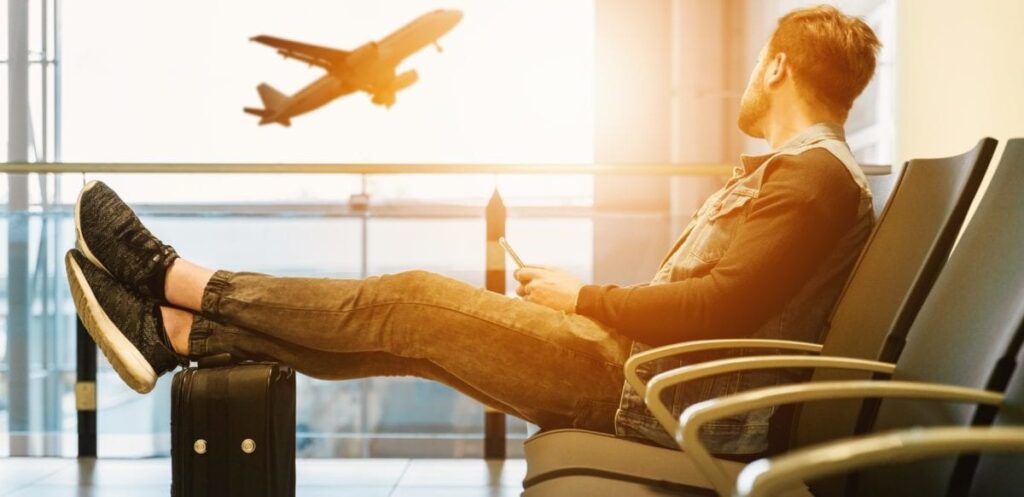This post contains references to products from one or more of our advertisers. We may receive compensation when you click on links to those products. The content on this page is accurate as of the posting date; however, some of the offers mentioned may have expired. For more information check out our Advertising Disclosure.
Terms apply to American Express benefits and offers. Enrollment may be required for select American Express benefits and offers. Visit americanexpress.com to learn more.
Thanksgiving is right around the corner and the December isn’t far off. With everyone racing home for the holidays, it’s set to be the busiest stretch of travel we’ve seen yet.
The travel planning app TripIt crunched the numbers and found nearly 40% more Americans will fly for Thanksgiving this year than in 2022 – including a 51% increase in Americans planning international travel for the holidays. The TSA is expecting to screen 30 million passengers between Friday, Nov. 18, and Tuesday, Nov. 28, likely tying previous, pre-pandemic records setting some records.
The Transportation Security Administration (TSA), airlines, and travel experts alike are all bracing for the latest and largest surge in travel demand yet.
“We expect this holiday season to be our busiest ever. In 2023, we have already seen seven of the top 10 busiest travel days in TSA’s history,” TSA Administrator David Pekoske said in a news release.
Americans are understandably on edge about a repeat of the mass delays and cancellations from the last holiday season. Longer lines and crowds await from security lines to airport lounges to boarding gates.
But it doesn’t have to be miserable. Follow our tips to make it home for turkey unscathed this year.
Avoid the Busiest Days
Even during the holidays, your home airport won’t be jam-packed every day. But a few days stick out. Just as during any time, weekends tend to be the busiest.
Historical trends suggest that the day before Thanksgiving (Wednesday, Nov. 22) and the following Sunday will be the busiest around the Thanksgiving holiday travel week. That makes sense: Travelers head home or fly to see family just in time for the holiday, then return for work.
TripIt’s booking data backs that up. It shows that Wednesday, Nov. 22 will be the single busiest travel day over Thanksgiving week … followed by Tuesday, Nov. 21.
However, the TSA is anticipating Sunday, Nov. 26 to be the most hectic, with an estimated 2.9 million passengers passing through security that day. That would tie the current record, set over the July 4 holiday weekend this past summer.
If there’s a bright spot for travelers, it’s that the ability to work remotely has given Americans far more flexibility to travel earlier and longer than ever before. There will still be peak travel days, of course … but it should be more evenly spread out throughout the week than pre-pandemic.
Still, plan accordingly if you want to avoid the crowds and long lines at airport security. Flying on off-peak days is key to a smoother travel experience.
What About Delays and Cancellations?
We won’t blame you for being anxious about the prospect of disruptions this holiday travel season. But we’ve got better news on that front.
After a nightmarish year of delays and cancellations last year capped off with Southwest’s historic meltdown, it seems like airlines have found their footing. It’s been many months since we’ve seen a repeat of the mass flight delays and cancellations that plagued U.S. air travel as airlines have right-sized their schedules and onboarded thousands of new hires to better keep up with travel demand.
Knock on wood, but it seems like airlines finally learned their lesson. That’s a good sign for trouble-free flying over Thanksgiving.
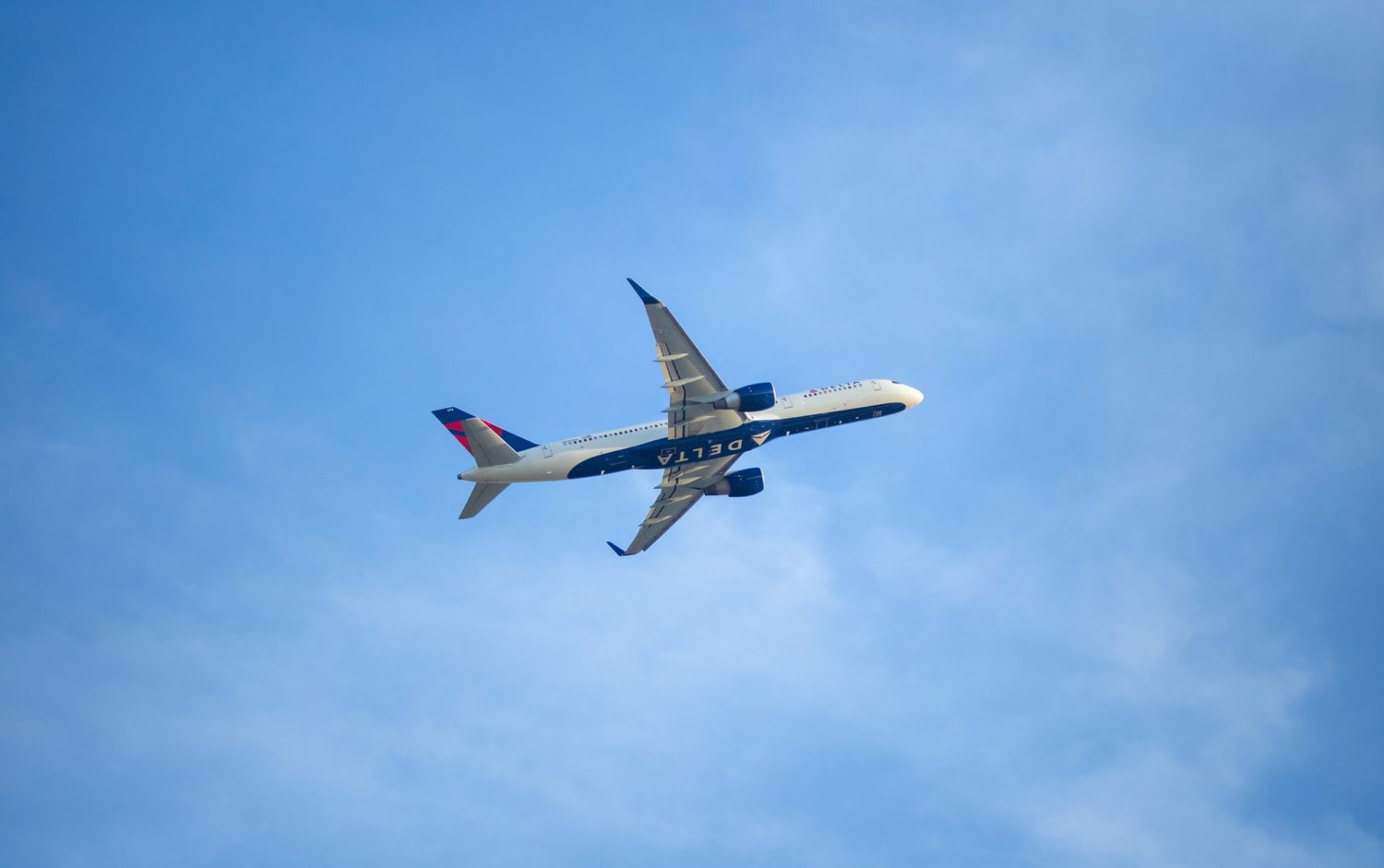

But weather is the X-factor. Clear skies should make for smooth flying all across Thanksgiving travel week. A bad storm in the Midwest or Northeast could throw airlines out of whack, causing a snowball effect that results in days of disruptions. There’s just no telling what could happen yet.
So watch the weather in the days leading up to – and more importantly, watch if your airline issues a “weather waiver” allowing you to get out of town before (or after) the storm hits without paying fees or fare differences.
Tips to Ensure Smoother Travel Days
While the U.S. airline industry is in a much better place than it was this time last year, it still pays to be prepared.
Here are a few things you can do to minimize your chances of getting delayed or canceled – or what you can do if the worst happens.
Take the earlier flight: If there’s one silver bullet, it’s this. Data shows clearly: The later you depart, the greater your chances of getting delayed. Book the earliest departure you can or change your flight to an earlier flight to improve your odds.
Avoid connections if you can: It might be cheaper, but taking an extra stop on your way to your final destination also doubles the chances of something going wrong.
Monitor your reservation & your airline: Watch your flight like a hawk for possible last-minute changes or delays – or use an app like Flighty to do it for you. But it also pays to monitor whether your airline is canceling or delaying flights in the days leading up to your trip. If FlightAware shows your airline is struggling on Tuesday, it’s safe to assume those issues may continue on Wednesday when you’re scheduled to fly.
Contact your airline – in more ways than one: If your flight gets delayed or canceled, don’t just sit in the long line at the gate or check-in desk. Call up your airline while you wait and slide into their DMs on social media, too. Get as many irons in the fire as you can.
Know your rights: If an airline cancels (or significantly changes) your flight for any reason other than weather, they owe you a refund. You may need to ask for it, but the airline can’t simply saddle you with a voucher for future travel. Use that money to rebook a last-minute flight to get where you need to go or try again another time.
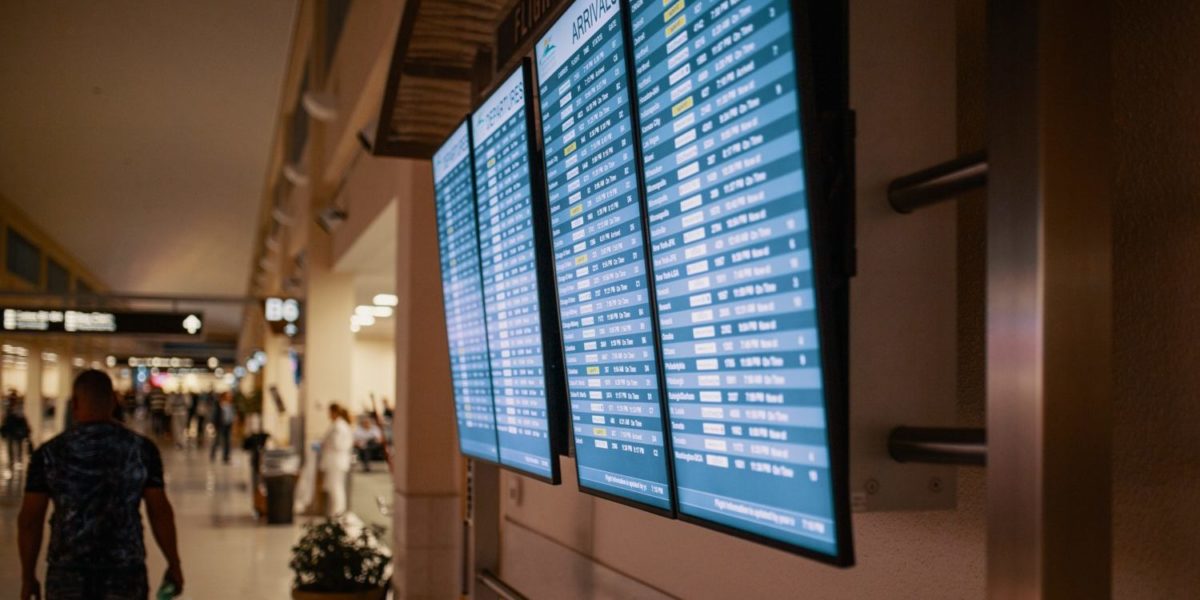

Read more: How to Survive (Or Avoid) Flight Cancellations & Delays
Pack in Just a Carry-On Bag
Getting to the airport early is one of the necessary evils of air travel. It only gets worse during the holidays.
Skip the lines to check a bag or grab it from the baggage claim. Pack in just a carry-on. We encourage all readers to travel with only carry-on luggage, no matter the season. It’s cheaper, faster, and frees you of the mental weight of keeping track of more things – or the possibility of the airline losing your bag.
But there’s no time it pays off more than when you can walk from the curb directly to the TSA security checkpoint as holiday travelers line up to check a bag. Travel with a carry-on, and there’s one less line you need to wait in.
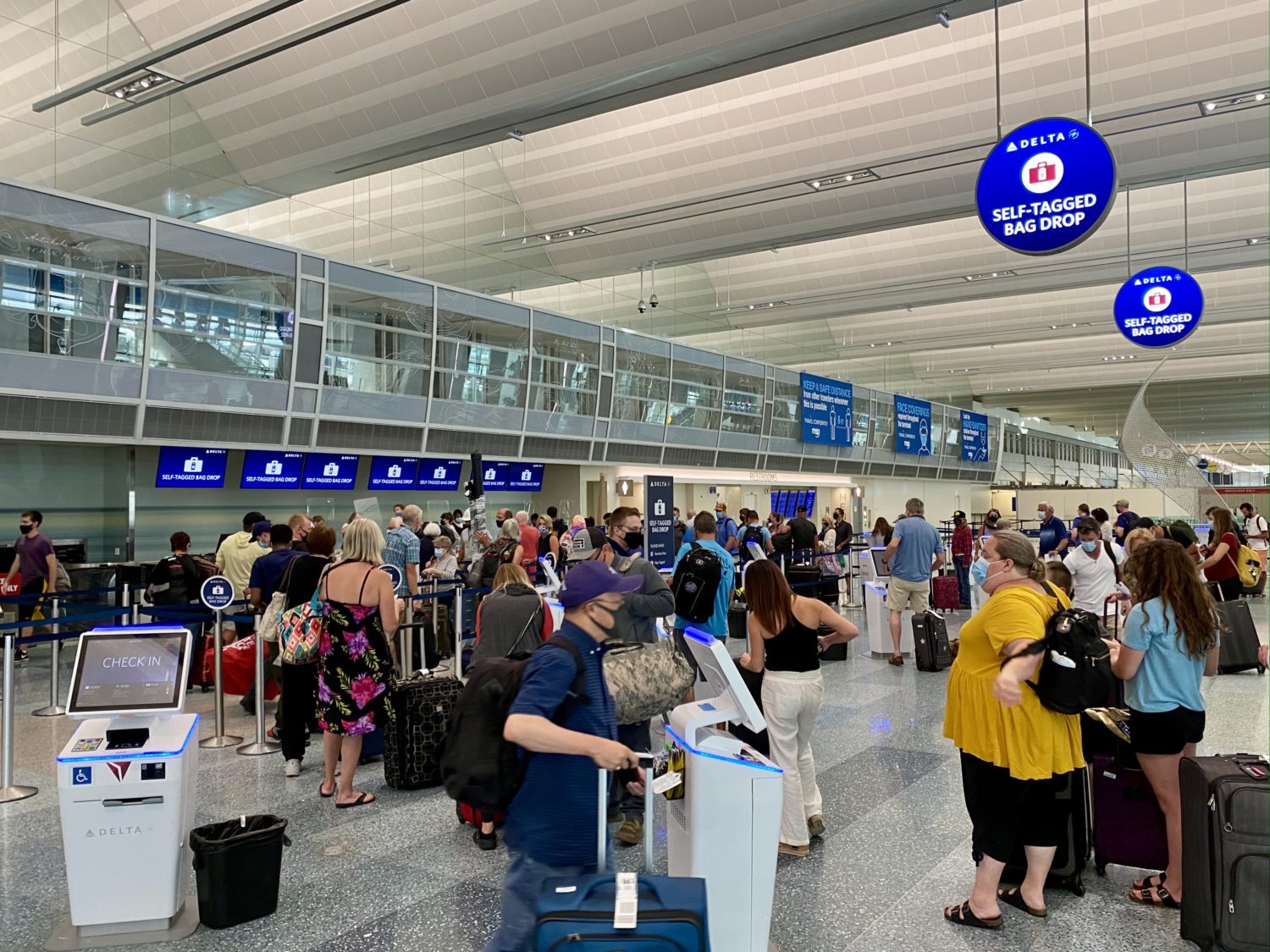

Need a new carry-on bag? Read up on five of our favorite bags out there.
Arrive Early, Research TSA Wait Times
Don’t think you can waltz into the airport with 25 minutes until departure. Now more than ever, it’s better to be safe than sorry.
Airport security checkpoints inevitably get backed up during peak holiday travel periods. While the TSA has staffed back up over the last few years, long lines are the norm even in the best of times.
So give yourself more time this holiday season. To be on the safe side, add at least 30-45 minutes to your typical airport routine. If you’re forced to fly on a peak travel day, arrive 2 hours or maybe even 2 1/2 hours before your flight.
When security lines look like this, even having TSA PreCheck or CLEAR is not a guarantee for a speedy trip through security.
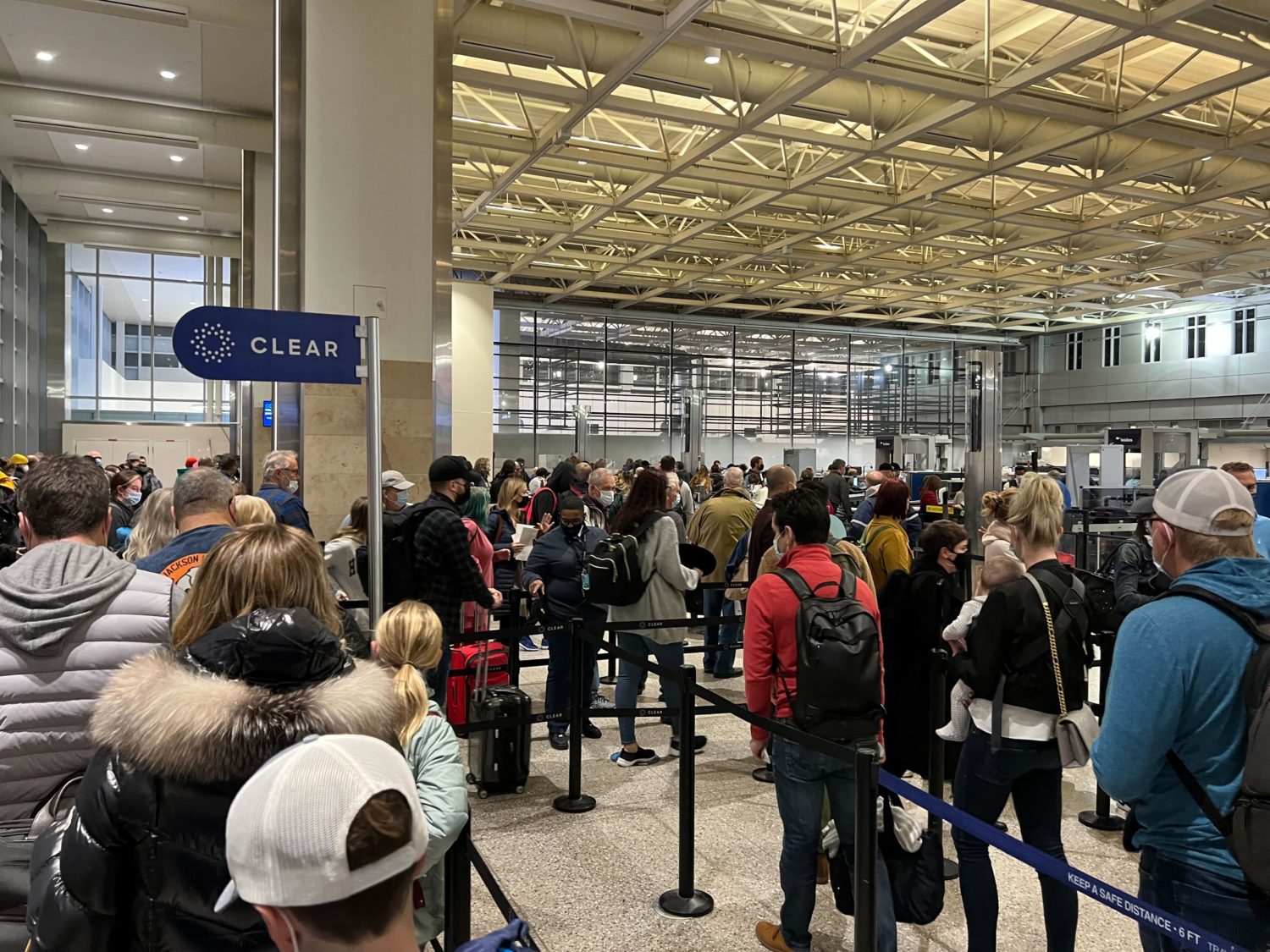

Want a sneak peek at what’s ahead for you at the TSA checkpoint? Some airports display the current wait times on their website. Otherwise, download the MyTSA app to check TSA wait times at your home airport before you make your way there. The app will even let you know when it expects wait times to peak throughout the day with a handy chart.
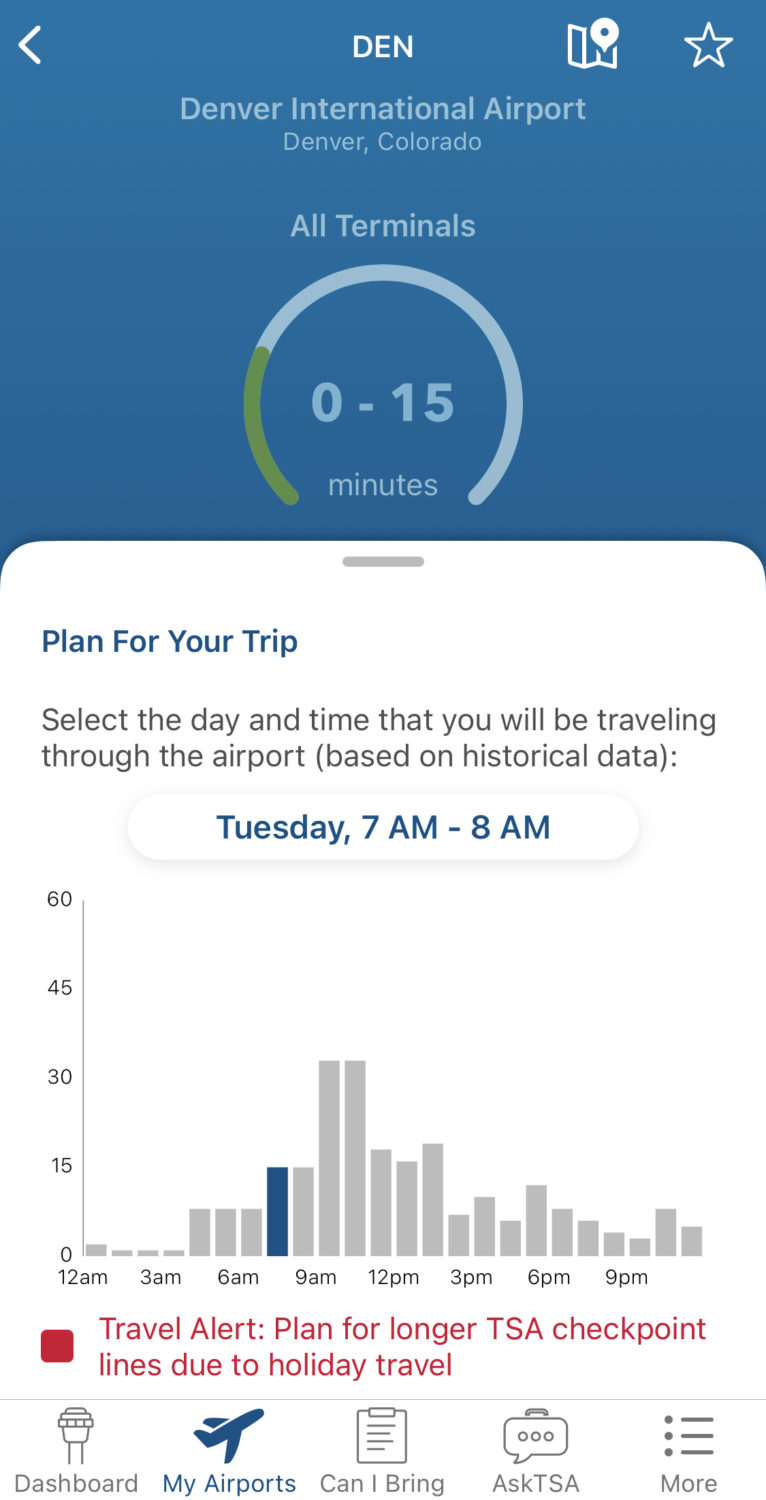

Get TSA PreCheck or CLEAR
Getting through airport security can be a headache even on a slow day. Mix in holiday crowds, and it can be a nightmare. It doesn’t have to be.
A pair of trusted traveler programs can help you skip the lines at security. The first and most popular option is TSA PreCheck, a government-run security program that gets you in a shorter, dedicated queue at the airport. You get to keep your shoes, belt, and a light jacket on. No need to take your laptop or carry-on approved liquids out of your bag, either. It makes the entire process far less stressful. After your first trip through security with PreCheck, you’ll wonder why you didn’t get it sooner.
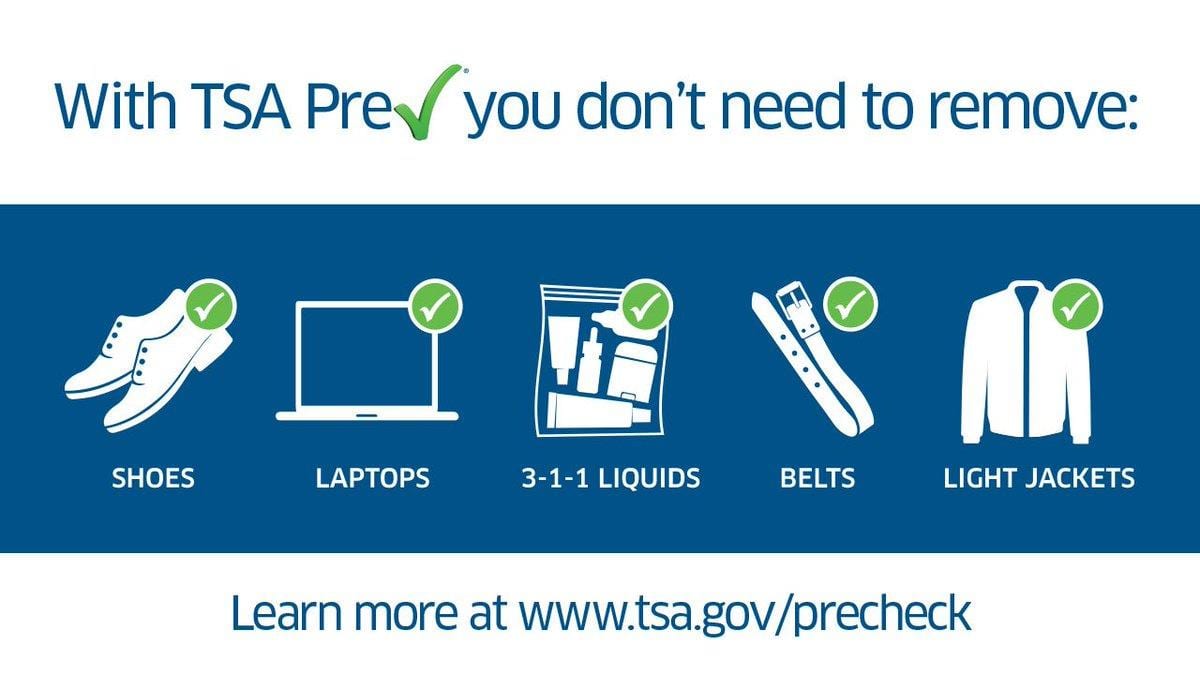

After a recent decrease, PreCheck costs $78 for a five-year membership. But you might want to consider a different program: You get PreCheck with Global Entry, the trusted traveler program that helps you get through immigration faster when returning to the United States. At $100 for five years of both programs, it makes Global Entry a two-for-one and a no-brainer. Just keep in mind it may take a while to get signed up for Global Entry.
Even better: You can get it for free. A handful of popular travel credit cards cover the fees for either Global Entry or PreCheck. Just pay for your application with one of these cards and voila: The credit kicks in automatically to cover the entire cost.
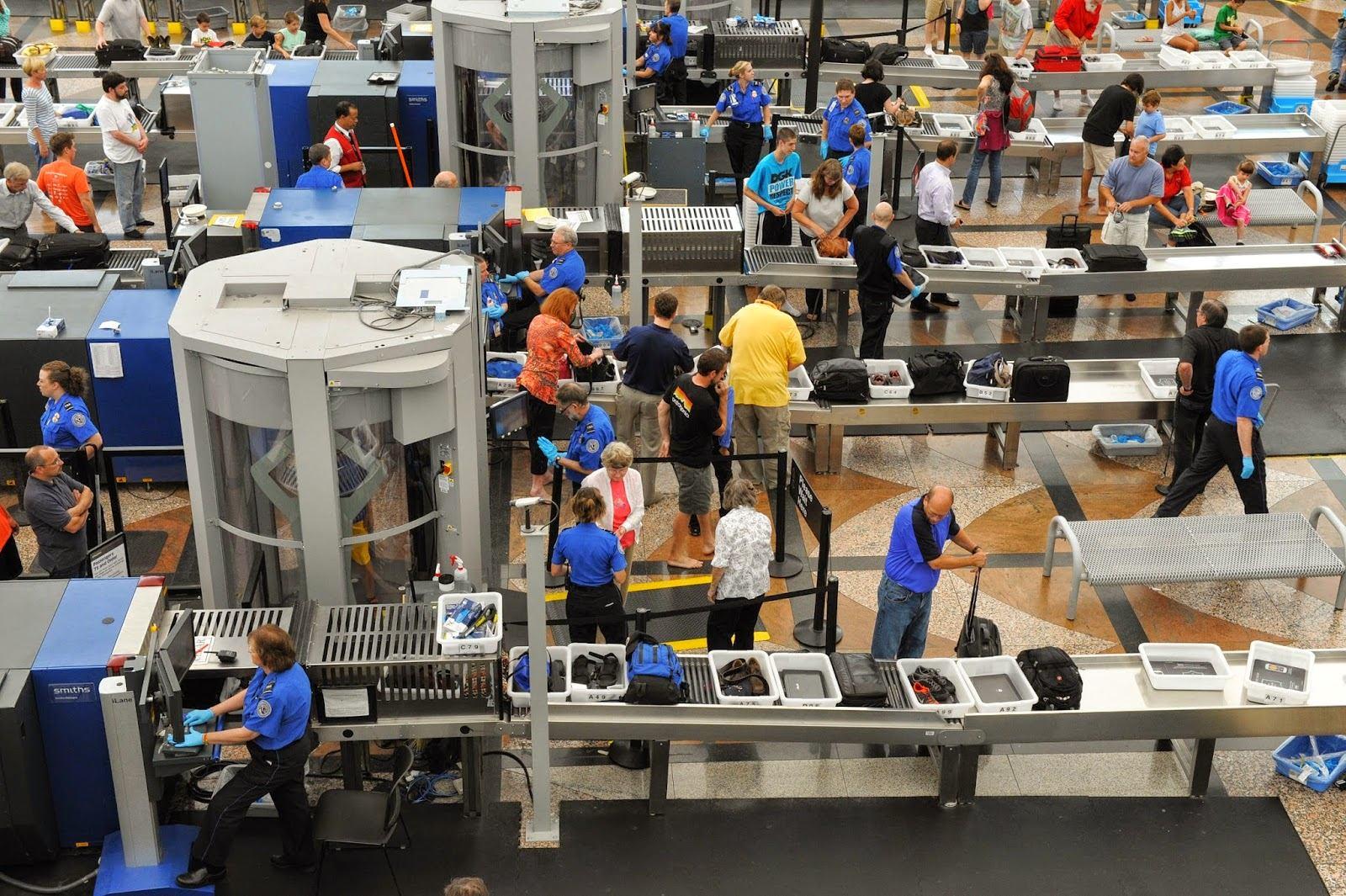

Another option is CLEAR® Plus, an independent trusted traveler program involving both fingerprints and a retinal scan. You can enroll online and finalize your membership at the airport. If you frequently depart from a Delta hub city like Minneapolis-St. Paul (MSP), Detroit (DTW), and Atlanta (ATL) or a United hub like Denver (DEN), Newark (EWR), or Washington, D.C.-Dulles (IAD), CLEAR® Plus is easily worth a look.
But CLEAR and TSA PreCheck aren’t synonymous. CLEAR® Plus cuts you to the front of the security lines, while PreCheck gets you into the designated lane. That makes CLEAR and PreCheck a powerful combo to get through the line as fast as possible.
The one hitch is that CLEAR isn’t available everywhere: It’s currently running at more than 50 U.S. airports and counting, plus a handful of professional sports stadiums. Expect that number to continue to grow.
And unlike the five-year membership for PreCheck, CLEAR has a steep annual fee: $189 per year. But Delta flyers can get some big savings. It costs $179 for a general SkyMiles member, and only $149 per year if you hold one of Delta’s co-branded American Express cards or have Delta Medallion status. Same goes for United MileagePlus members, elites, and cardholders.
CLEAR is free for top-tier Delta Diamond Medallion and United 1K status members. And both *amex platinum* and *amex green* offer a $189 annual credit to cover the entire cost of CLEAR Plus membership, too.
Relax Inside a Lounge
With a few million travelers on the move, your airport terminal could be full in the next few weeks. Need an escape (and maybe a drink)? You’re looking for an airport lounge.
At a minimum, you’ll get free drinks and snacks, a place to recharge your devices, and far better seating than the stiff chairs at your gate. In major hubs and overseas, you might find full buffets, a la carte dining, showers, and even private sleeping rooms.
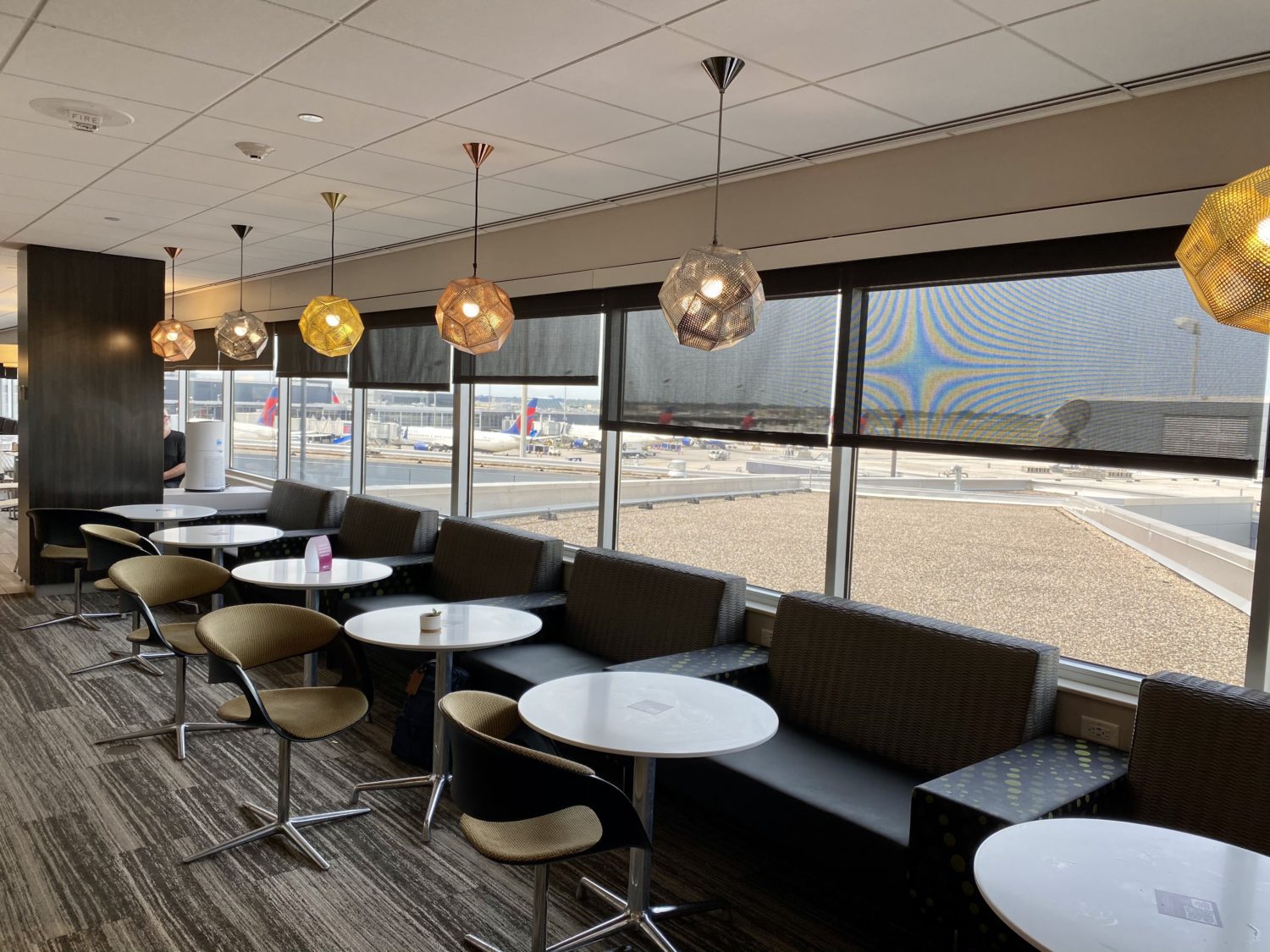

Check out the app Loungebuddy for a rundown of what lounges are available at any airport. Loungebuddy will also tell you whether you can buy a single-visit day pass to a lounge.
But rather than paying upfront per visit, the best way to get into airport lounges is by holding the right premium travel credit card. One of our favorites is *amex platinum*, which opens more lounge doors than any other credit card.
You’ll get access to a growing number of posh Amex Centurion Lounges in the U.S. and abroad 1,200-plus Priority Pass lounges worldwide. If you’re flying Delta that day, you can get into the Delta Sky Club. Finally, you can get into Plaza Premium Lounges and Escape Lounges, including our hometown favorite: The MSP Escape Lounge.
At $695 per year (see rates & fees), the Platinum Card isn’t for everyone. But unbeatable lounge access plus all the other Amex Platinum benefits can easily make that price tag worth it for some travelers.
The *venture x* is another great option – especially if you’re looking to pay less. It’ll get you into Priority Pass lounges worldwide plus the outstanding new Capital One lounges in Dallas-Fort Worth (DFW), Washington, D.C.-Dulles (IAD), and the new one in Denver (DEN) that opened earlier this month.


The Venture X Card hit the market targeting price-conscious travelers who still want perks: It has an annual fee of just $395 a year. But even that’s deceiving, as an annual $300 credit towards any travel booked through the Capital One travel portal cuts the effective cost down to just $95 a year right off the bat.
Read more: Why the Capital One Venture X Annual Fee Shouldn’t Scare You Off
Bottom Line
You might be dreading spending any of your holiday season inside an airport, and you’re not alone – especially with travel demand set to surge again, putting airlines to their latest and greatest test.
But the U.S. airline industry is in a much better place than it was just a few months ago. With some proper planning and a few of these tools, you can make it through.
Stop overpaying for travel!
Get our daily email for the latest in travel, flight deals, and how to save on your next trip.


